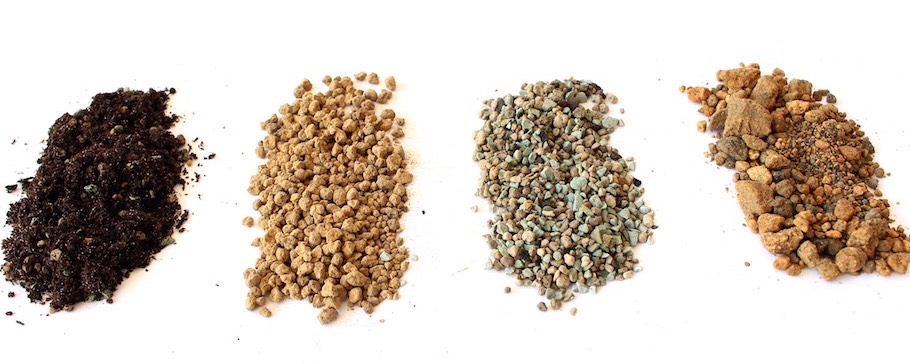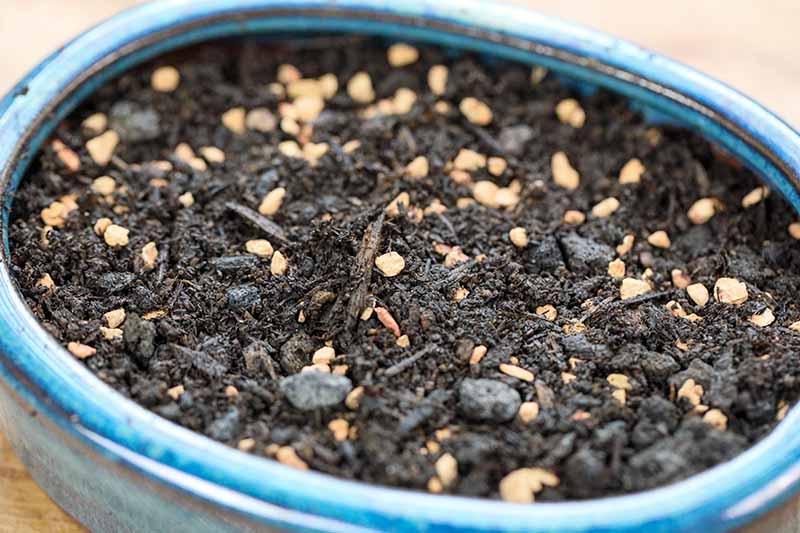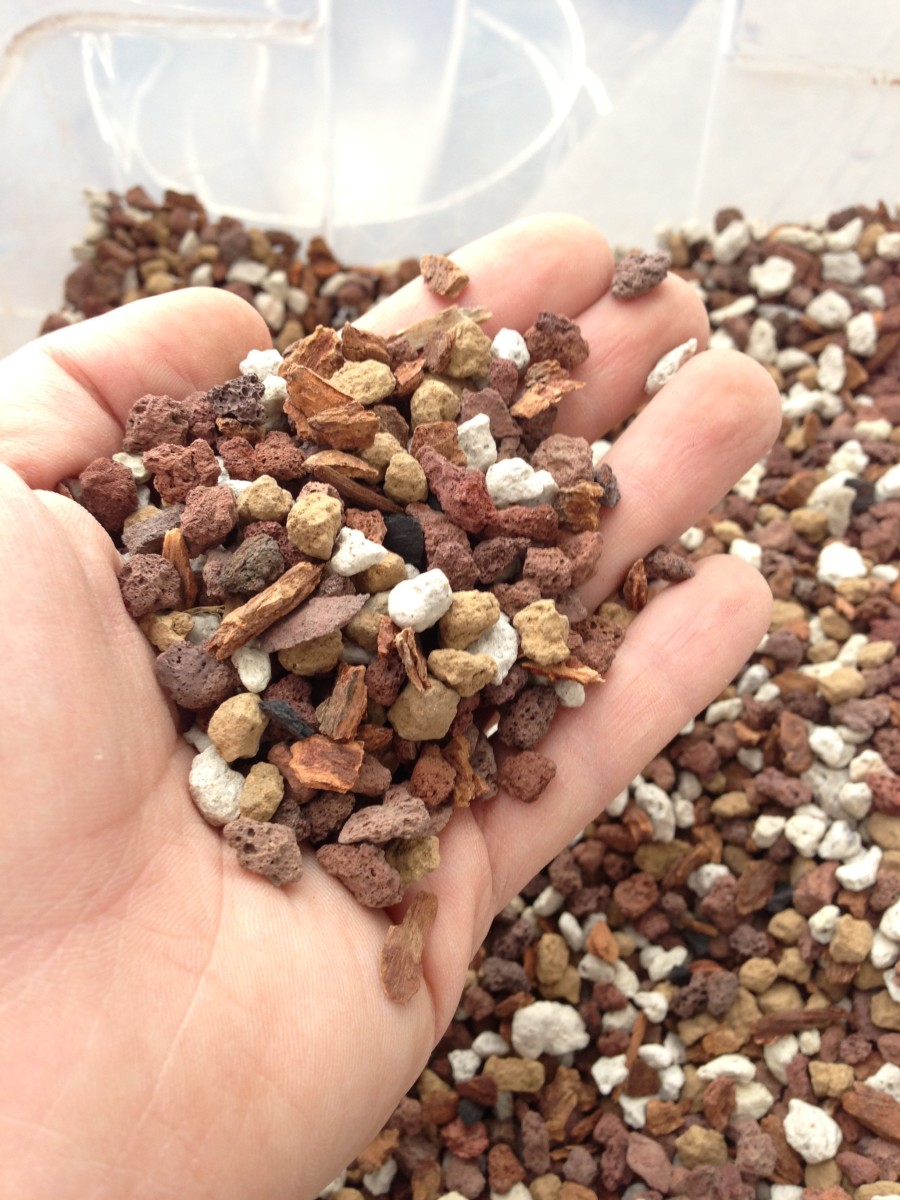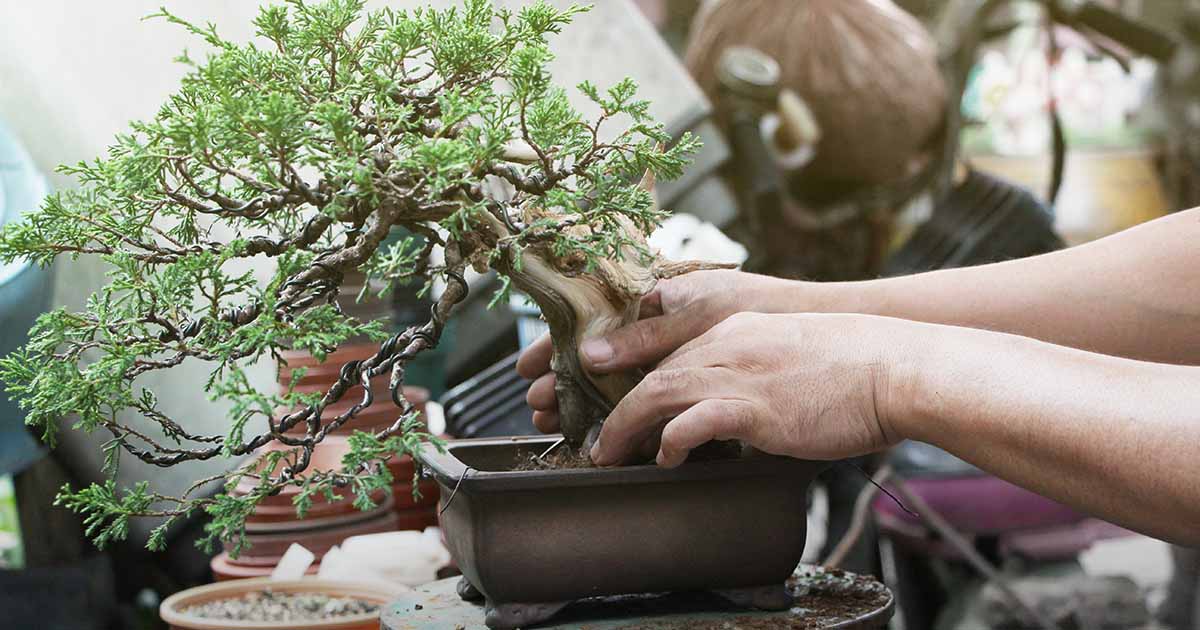In this article, we will discover the different types of soil and substrates Utilized in bonsai cultivation, which includes natural and inorganic choices.
We are going to also explore advised soil mixtures for many bonsai species, which include deciduous, coniferous, and indoor versions. From akadama and pumice to moss and river sand, we are going to dive to the interesting planet of bonsai soil and enable you to understand why It really is an essential part of cultivating these exquisite trees.

Bonsai soil
What is bonsai soil?
Bonsai soil is a specialized type of soil that is specifically formulated for growing and maintaining bonsai trees. Unlike regular garden soil, bonsai soil is well-draining and provides the necessary nutrients and moisture balance for the tree's root system. The composition of bonsai soil is carefully designed to meet the unique needs of bonsai trees, ensuring their health and longevity.
The importance of bonsai soil
The choice of soil plays a crucial role in the success of your bonsai tree. The right soil provides optimal drainage, allowing excess water to flow freely and preventing root rot. It also promotes a healthy and well-developed root system, which is essential for the overall health and growth of the tree. Bonsai soil retains moisture while allowing air to reach the roots, striking the perfect balance for the tree's needs. Choosing the right bonsai soil is essential for maintaining a healthy and thriving bonsai tree.
Bonsai substrates
What are bonsai substrates?
Bonsai substrates refer to the different materials that can be used to create the ideal soil composition for bonsai trees. These substrates are carefully chosen to meet the specific needs of different species of bonsai trees and to ensure proper water drainage and nutrient availability.
Different types of bonsai substrates
There are various types of bonsai substrates available, each with its own unique characteristics and benefits. Some common bonsai substrates include:
- Organic materials: These include ingredients such as bark, peat moss, and coconut coir. Organic substrates help retain moisture and provide essential nutrients to the bonsai tree.
- Inorganic materials: These involve parts like pumice, lava rock, and akadama. Inorganic substrates present excellent drainage, making sure that excessive water will not accumulate round the roots of the bonsai tree.
- Soil amendments: They're substances which can be added into the soil mixture to enhance its Houses. Examples of soil amendments include perlite, vermiculite, and sand. They improve the soil's aeration, drinking water-Keeping capability, and nutrient availability.
By knowledge the differing types of bonsai substrates and their Qualities, you are able to decide on the most fitted one particular for your personal bonsai tree's requirements.
Organic and natural or Inorganic Soils
Organic and natural soils for bonsai
Natural soils for bonsai are composed of pure elements for example bark, peat moss, coconut coir, and compost. These supplies give a prosperous supply of nutrients with the bonsai tree and promote nutritious root growth. Natural soils even have good h2o retention Qualities, making sure the tree gets satisfactory dampness among watering classes. On the other hand, it is vital to notice that natural and organic soils may perhaps stop working eventually and grow to be compacted, resulting in bad drainage and prospective root troubles.
Inorganic soils for bonsai
Inorganic soils for bonsai encompass products like pumice, lava rock, akadama, and soil amendments like perlite or vermiculite. These components have superb drainage Attributes, avoiding waterlogged soil and marketing aeration within the roots. Inorganic soils are preferred by many bonsai fanatics due to their longevity and skill to provide a steady atmosphere with the bonsai tree's root technique. Nevertheless, They could call for more Repeated watering and extra fertilization, as they do not maintain just as much moisture or nutrients as natural and organic soils.
Positives and negatives of making use of organic and natural and inorganic soils for bonsai
Deciding on concerning organic and inorganic soils for your personal bonsai tree is dependent upon a variety of aspects, including the specific species of tree, your climate, and personal preferences. Listed below are the positives and negatives of every:
Organic soils:
- Execs: Deliver nutrients, fantastic h2o retention, promote nutritious root advancement.
- Downsides: May possibly break down after some time, potential for poor drainage Otherwise adequately taken care of.
Inorganic soils:
- Pros: Fantastic drainage, long-lasting, steady setting for roots.
- Downsides: Significantly less h2o retention, may possibly demand additional Repeated watering and fertilization.
By taking into consideration the positives and negatives of equally organic and natural and inorganic soils, you may make an knowledgeable choice based on the precise needs within your bonsai tree.
Soil components
Important components of bonsai soil
Bonsai soil is typically composed of a few most important factors: grit, natural and organic make any difference, and clay. These factors work together to produce The perfect soil framework for that bonsai tree's root process.
- Grit: Grit, for instance sand or perlite, delivers drainage and aeration while in the soil. It helps avoid waterlogging and permits air to reach the roots.
- Organic matter: Natural and organic subject, for instance compost or bark, supplies nutrients for the bonsai tree. What's more, it will help retain moisture and improve the soil's Total construction.
- Clay: Clay particles deliver some water retention traits and support bind the soil together. Even so, too much clay may result in poor drainage and compaction.
Part of each soil ingredient
Each individual soil ingredient performs a significant part in developing a perfectly-balanced and nutritious setting for your bonsai tree's roots.
- Grit: Grit gives the required drainage and aeration within the soil. It helps prevent the roots from sitting in stagnant drinking water, reducing the risk of root rot and marketing General root wellness.
- Organic make any difference: Natural and organic matter supplies essential nutrients towards the bonsai tree. It aids in humidity retention and contributes to the overall structure in the soil.
- Clay: Clay particles help bind the soil collectively and provide some h2o retention capability. However, it is important to balance the level of clay to avoid issues like weak drainage and compaction.
By comprehension the roles of each soil ingredient, you'll be able to develop a well balanced bonsai soil combine that fulfills the precise demands of your tree.

Recommended Bonsai soil mixtures
Common bonsai soil mixtures
There are several common bonsai soil mixtures that have been proven effective for various types of bonsai trees. These mixtures typically consist of a combination of inorganic substrates, organic matter, and soil amendments.
Some of the commonly used bonsai soil mixtures include:
- Akadama, pumice, and lava rock: This mixture is popular among bonsai enthusiasts for its excellent drainage and water retention properties.
- Akadama, lava rock, and natural and organic make a difference: This mixture combines the key benefits of inorganic substrates Using the nutrient-abundant Qualities of natural and organic make a difference.
- Pumice, perlite, and bark: This combination offers superior drainage and aeration although retaining some dampness and furnishing nutrients.
They're just some examples of bonsai soil mixtures, and The perfect combination will count on the particular demands of one's bonsai tree plus your local weather.
Components to think about when picking out a bonsai soil mixture
When deciding on a bonsai soil combination, it's important to take into account the subsequent variables:
- Species of bonsai tree: Different species have distinct humidity and nutrient requirements. Investigate the specific demands of your tree to pick a soil combination that satisfies its specifications.
- Weather: The climate you live in can have an affect on the moisture retention Homes of your soil. Evaluate the common humidity and temperature in your town When picking a soil mixture.
- Watering practices: Your personal watering behaviors and schedule really should align Using the soil mixture you decide on. Some mixtures involve a lot more Regular watering, while others retain dampness for extended durations.
- Budget: Some soil elements could possibly be dearer than Other folks. Contemplate your spending plan when choosing a soil combination.
By using these aspects into consideration, you could opt for a bonsai soil combination that provides the ideal increasing situations to your tree.
Deciduous Bonsai soil
Ideal soil composition for deciduous bonsai
Deciduous bonsai trees, for example maple or birch, have precise soil demands to assistance their progress and overall health. The most beneficial soil composition for deciduous bonsai ordinarily features a mix of organic and natural matter, inorganic substrates, and soil amendments.
A advisable soil composition for deciduous bonsai could incorporate:
- Akadama: Delivers fantastic h2o retention when enabling for drainage. In addition, it releases nutrients little by little after a while.
- Pumice: Promotes aeration and drainage from the soil, avoiding waterlogging.
- Bark or peat moss: Provides natural and organic matter into the soil, providing nutrients and dampness retention.
This soil composition makes sure that the roots of deciduous bonsai trees obtain the best harmony of dampness, nutrients, and oxygen for exceptional growth.

Coniferous and Pine soil
Ideal soil mixture for coniferous and pine bonsai
Coniferous and pine bonsai trees have specific soil requirements due to their water retention needs and preference for acidic soil. An ideal soil mixture for coniferous and pine bonsai should provide good drainage while retaining moisture and maintaining the desired pH level.
A recommended soil mixture for coniferous and pine bonsai may include:
- Akadama: Provides excellent water retention while allowing for sufficient drainage. It releases nutrients slowly over time.
- Pumice: Promotes aeration and drainage within the soil, stopping waterlogged roots.
- Peat moss: Adds natural make any difference and acidity into the soil, building a really perfect pH amount for coniferous and pine trees.
This soil combination ensures that the roots of coniferous and pine bonsai trees obtain the correct balance of humidity, nutrients, and acidity for his or her specific demands.
Akadama
What exactly is akadama?
Akadama is often a style of clay soil that is certainly broadly Utilized in bonsai cultivation. It truly is known for its excellent h2o retention Homes, which make sure a steady supply of humidity to your bonsai tree's roots. Akadama can be prized for its capability to launch nutrients bit by bit over time, furnishing a reliable source of nourishment for your tree.
Great things about working with akadama in bonsai soil
Employing akadama in bonsai soil gives several Gains:
- Drinking water retention: Akadama has Remarkable water retention Attributes, letting it to hold humidity with no turning into waterlogged. This makes certain that the bonsai tree's roots get a steady source of h2o, advertising and marketing nutritious advancement.
- Nutrient launch: Akadama slowly but surely releases nutrients in the soil with time, providing a reliable supply of nourishment for the bonsai tree. This lessens the need for Recurrent fertilization and will help preserve a well balanced nutrient profile.
- Aeration: Inspite of its h2o retention capabilities, akadama also provides sufficient aeration towards the bonsai tree's roots. It makes it possible for air to get to the root procedure, stopping concerns for example root rot as a consequence of lack of oxygen.
By incorporating akadama in to the bonsai soil, you can make an exceptional expanding natural environment for your tree, guaranteeing its wellbeing and vitality.

Lava rock
How lava rock benefits bonsai soil
Lava rock is a popular component in bonsai soil mixtures due to its excellent drainage and aeration properties. It is typically used in conjunction with other substrates to create the ideal soil composition for bonsai trees.
The benefits of lava rock in bonsai soil include:
- Drainage: Lava rock provides excellent drainage, preventing waterlogging and ensuring that excess water flows freely through the soil. This helps prevent root rot and provides a healthy environment for the roots to thrive.
- Aeration: The porous character of lava rock makes it possible for air to circulate within the soil, supplying oxygen for the bonsai tree's root program. Suitable aeration is crucial for wholesome root improvement and General tree development.
- Longevity: Lava rock is usually a durable materials that does not stop working simply. This makes sure that the soil structure continues to be secure after some time, minimizing the need for Recurrent soil replacements.
Lava rock is offered in several sizes and styles, making it possible for for personalization dependant on the precise requires of the bonsai tree and soil specifications.
Differing kinds of lava rock
You'll find different types of lava rock which might be Employed in bonsai soil mixtures, which include:
- Black lava rock: Black lava rock is actually a commonly utilised materials in bonsai soil mixtures. It offers exceptional drainage properties and provides an aesthetic element to the overall presentation with the bonsai tree.
- Crimson lava rock: Purple lava rock is another well-known choice in bonsai soil mixtures. It provides equivalent drainage and aeration benefits as black lava rock but has a distinct reddish shade that adds Visible desire for the container.
Both of those black and red lava rocks are broadly accessible and will be very easily integrated into your bonsai soil combination.
Potting
Important tricks for productive bonsai potting
Potting is usually a vital system in bonsai cultivation, as it right impacts the health and fitness and improvement with the tree's roots. Here are some more info important methods for thriving bonsai potting:
- Choose the correct pot dimension: Pick out a bonsai pot that allows for root development although however offering a cosy fit. Steer clear of pots which might be much too significant, as they can lead to abnormal soil dampness and lousy root enhancement.
- Use bonsai wire: Protected the tree during the pot utilizing bonsai wire to make certain balance. This stops the tree from shifting or turning out to be uprooted for the duration of watering or sturdy winds.
- Trim and unfold the roots: Before potting the bonsai tree, very carefully trim and unfold out the roots. This encourages outward progress and stops root tangling or root-certain concerns.
- Incorporate mesh screens: Area mesh screens about the drainage holes at The underside with the pot to forestall soil erosion and assure suitable drainage.
- Use clean bonsai soil: When potting, generally use contemporary bonsai soil to offer the required nutrients and ideal developing situations for your roots.
By subsequent these vital guidelines, you'll be able to make sure a successful potting system and boost the overall health and advancement of your respective bonsai tree.
The position of bonsai pots in soil moisture Command
Bonsai website pots Enjoy a crucial position in soil dampness Manage, right impacting the health and progress in the tree. Bonsai pots are typically shallow and possess drainage holes, making it possible for extra h2o to flee and preventing the soil from getting waterlogged.
The look of bonsai pots promotes evaporation and air circulation, which allows control soil dampness levels. The shallow depth and wide opening of your pot expose a lot more surface place from the soil into the air, aiding in dampness evaporation. This prevents the roots from sitting down in excessively moist soil, lowering the potential risk of root rot and various drinking water-related troubles.
In addition, the drainage holes in bonsai pots let any excess drinking water to escape, avoiding waterlogged soil and selling aeration across the roots. Right aeration is essential for the health and advancement of the basis procedure, making certain the bonsai tree receives the mandatory oxygen for development.
By making use of bonsai pots suitable for effective dampness Regulate, you are able to build a favorable surroundings in your bonsai tree's roots and market its Over-all wellbeing and vitality.
In conclusion, choosing the ideal bonsai soil is significant for the success and well being of one's bonsai tree. Comprehending the different types of bonsai substrates, the role of natural and organic and inorganic soils, The important thing elements of bonsai soil, and the different proposed soil mixtures can help you supply the optimum rising conditions to your bonsai tree. Irrespective of whether you have a deciduous or coniferous bonsai, incorporating components like akadama and lava rock can enrich the soil's drainage and nutrient availability. Furthermore, paying attention to potting tactics and applying bonsai pots designed for dampness Command will even more aid the thriving development of the bonsai tree. With right understanding and implementation of bonsai soil methods, it is possible to take pleasure in the beauty and artistry of bonsai cultivation For many years to come back.
